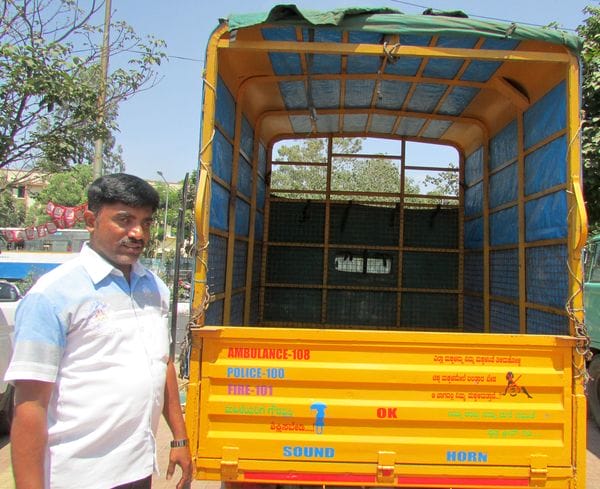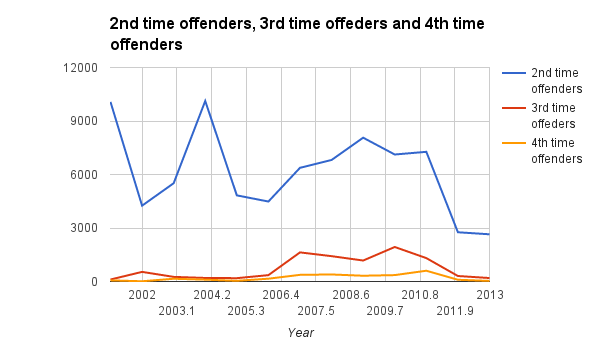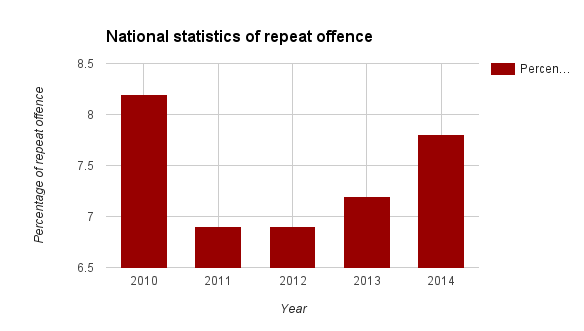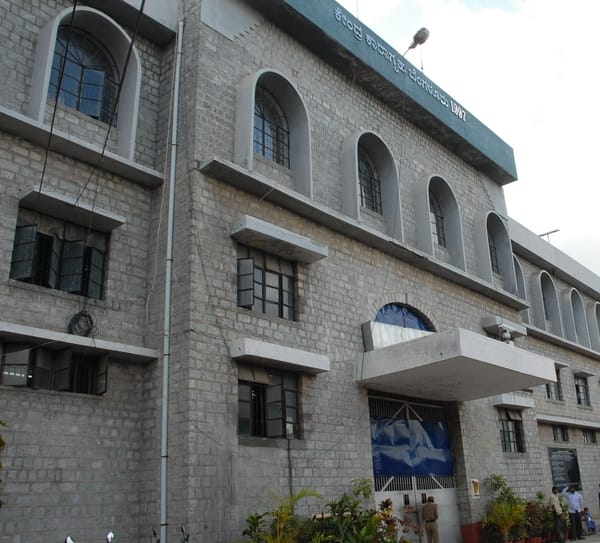“Mistakes happen deliberately or unwittingly. Sometimes convicts may not be the real culprits. Doesn’t everyone deserve a second chance?” asks Honnegowda, who spent 15 years in jail. Ten years post-release, he now stands as a testimony to how one can lead a dignified life even after serving life sentence.
But, to what extent do society and the government support and help prisoners lead their lives post-release? For a just-released prisoner, reintegration with the world is the most important and challenging aspect. The Karnataka government may have taken a significant step by releasing 633 convicts who had served over 14 years of imprisonment, in two batches – in September 2015 and January 2016. But does the job of the government and the Prisons Department end with their release?

Honnegowda, a life convict, was released from prison in 2006. He runs a goods auto and leads a happy life with his family in Bengaluru. Pic: Akshatha M
“No. The government has to take up the responsibility to rehabilitate them,” asserts former bureaucrat and Criminology Expert Dr. S M Jamdar. Jamdar who has served as the Principal Secretary of Home Department, highlights the need to offer effective counseling to prisoners prior to release. After languishing in jail for years, the state of mind of the prisoners will be different. Hence, they should be given counseling to prepare them to adjust to the new environment, he says.
Dr Jamdar believes that counseling the family members of the to-be released prisoners too is critical. “Establishing family ties, convincing family members to accept the convict post-release, ensuring that the prisoner does not take extreme steps like suicide… all these aspects should be taken care of prior to the release. Along with this some sort of financial assistance to ensure that the prisoners do not face unemployment after the release, should be extended,” Dr Jamdar points out.
‘Released prisoners doubly-marginalized’
It is essential to rehabilitate the prisoners because the released prisoners are doubly marginalised, says retired IPS officer S T Ramesh.
He calls them doubly marginalised, because, most of the prisoners as it is are from the marginalised section of the society. Once they are released from the prison, they will have to face the social stigma attached to convicts, because of which they tend to become even more marginalised. “That is when rehabilitation programs can help them start a new life,” he believes.
S T Ramesh was the ADGP and IG (Prisons) in Karnataka in 2006, when the then State government had decided for the early release of 309 prisoners. Recalling how the Prisons Department in co-ordination with other welfare departments tried to support the released prisoners, he says: “I had just taken charge of the Prisons Department when I got to know that the then government had initiated the process of releasing 309 prisoners. I tried to do my best to rehabilitate those prisoners in the limited time that I had at my disposal.”
Bangalore Central Jail at Parappana Agrahara.
Ramesh figired out then that a majority of the to-be released prisoners were from marginalised section of society. Explaining the modus operandi, he said the first thing that he did was to convene a meeting of the officials of the Minorities, Backward Class and SC/ST Corporations and Women and Child Welfare Department, to chalk out plans to rope in concerned departments to help the prisoners.
This was followed by a quick socio-economic survey of the to-be released prisoners to identify the needy. An aptitude test was also conducted to understand the interest and skills of all the convicts. Then various welfare departments and corporations finalised on issuing loans and providing funds to the prisoners post-release. “We did our best to help the maximum number of prisoners. I tried to provide jobs to a few people in my personal capacity too. I did not hear any complaint of unemployment,” says Ramesh.
How should rehabilitation be done?
Theoretically, State Prison Department should follow the rehabilitation guidelines as per the Karnataka Prison Manual, 1978. The four decade-old prison manual does not elaborate on the rehabilitation process. It merely mentions in brief that a committee be constituted to look into rehabilitation of prisoners. It speaks about the need for rehabilitating the released prisoners and tracking the record of those who are rehabilitated, but not how it should be done.
However, the Model Prison Manual prepared by the Bureau of Police Research and Development (BPRD), a division of Ministry of Home Affairs, Government of India, has a chapter exclusively for “After Care and Rehabilitation of Prisoners” which speaks in detail about rehabilitation process. The BPRD Prison Manual highlights the need for the effective integration of administrative machinery with the department of prisons.
The manual states: “A large number of prisoners coming from the rural areas and agrarian and business communities are generally accepted back into their family. They are reassimilated in the social milieu without much difficulty. They require only some continued contact with their kin and some pre release counseling to bridge the gap between their life in the prison and that in the free society.”
Manual underlines the need for extending help, guidance, counseling to the released prisoners, help to overcome mental, social and economic difficulties, bringing change in their habits, and attitude, assist to readjust with the family and ultimate rehabilitation, provide financial assistance to cover initial expenditure, provide temporary accommodation in case of necessity.
Since the Prisons Department comes under the State list, it is not bound to follow the BPRD manual. “The State Prison Manual does not specifically speak about rehabilitation of released prisoners. When I was the ADGP I used to refer to BPRD manual because it was a model manual. I had even conducted workshops to make police officers understand the manual,” S T Ramesh recollects.
‘Revamp skill development’
Ramesh also believes that the first step towards rehabilitation is providing skill development to the prisoners. However, he is critical of the kind of skills that are imparted to the prison inmates at present. “The training given to inmates like incense stick making, carpentry and plumbing are age old skills and they do not come to much use in the outside world. The old skill development model should be replaced with modern technologies,” says S T Ramesh.
He is of the opinion that with the Central government launching skill-enhancing programs like National Skill Development Mission, private industries could be roped in to train the prisoners. “Where else can you get a better work force than the captive people in prison?” he asks. His opinion matches the sentiments of released prisoners like Shrinivas who says skills like carpentry and handloom, which he had learnt in the prison were of no use once they were out of prison.
Release and relapsing criminal behaviour
A classic movie released in the 1950s, “Do Aankhen Barah Haath” reflects how rehabilitation of released convicts will help them to reform as better individuals. Rehabilitation of released prisoners plays a significant role in preventing them from relapsing the crime. “Prison reformation and rehabilitation works out for the convicts who are into long-term imprisonment. They get enough time to repent and reform. But, the same cannot be said about undertrials and convicts who are in jail for a short-term. Their chances of reformation is less” observes S M Jamdar.
Further, he says that recidivism tendency (relapsing criminal behavior after undergoing punishment) could be only up to 10 per cent among those who have served life sentence. After spending 10-15 years in the prison, with the proper reformation and rehabilitation system, they tend not to repeat the offence.
When Citizen Matters analysed the recidivism statistics in India and more specifically in Karnataka, it was revealed that the rate of repeat offenders in the state has gradually decreased over the years. Statistics available in the Open Government Data Platform website (till 2013) shows that the number of second time convicts in Karnataka which was 10,072 in the year 2001, decreased to 2,647 in 2013. The rate of third time offence, which was as low as 111 in 2001, gradually increased to 1,312 in 2011 and saw a sudden decrease of 308 in 2012 and 198 in 2013. The rate of fourth time convicts which was only 64 in 2001, shot up to 604 in 2011, but saw a decrease in 2012 (97 cases) and 2013 (33 cases). Crime-wise break-up of repeat offence is not available.

Repeat criminals in Karnataka – a graph. Data: NCRB
As far as recidivism rate in India is concerned, according to National Crime Records Bureau statistics, out of total arrestees (37,90,812) during the year 2014, the number of those who were second time convicts was 2,34,896 (6.2%), those convicted for the third time was 47,884 (1.3%) and those convicted for the fourth or more time was 12,960 (0.3%).

Rate of repeat conviction in India – a graph. Data: NCRB
2014 saw an increase in the second and third time offenders compared to previous years. In 2010, percentage of recidivists was 8.2, where as it was 6.9 per cent in 2011 and 2012, 7.2 per cent in 2013 and increased to 7.8 per cent in 2014. According to studies, the rate of recidivism is much lower in India compared to other countries. The rate of repeat offence is 90 per cent in UK, 40 per cent in United States, but only 4.7 per cent in India.
Rehabilitation appears to be a distant dream
While the released prisoners are still hoping for the government and the Prisons Department to come to their help, there seems be no light at the end of the tunnel. When Citizen Matters asked Director General of Police (Prisons) H N Satyanarayana Rao about the department’s plan to rehabilitate the released prisoners, he said that there was no separate programme such as rehabilitation or any department to carry out the task.
However, he said, the Prisons Department was “analysing the skills” of the prisoners who were prematurely released in January and would see if they can plan a structured program. When asked whether the Department would also take into consideration the batch of prisoners who were released in September, he replied in negative and said that release did not happen during his tenure.
Related Articles
Out of jail, life is a roller coaster for these released prisoners
Move over Central Jail, enter Freedom Park
What does SC order on criminal conviction mean to Bangalore MLAs?
